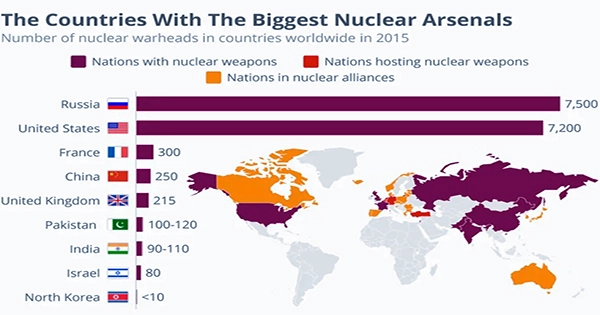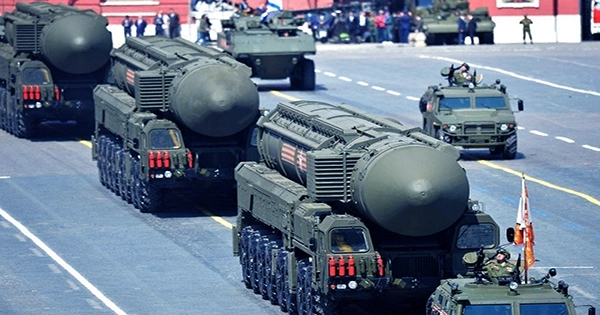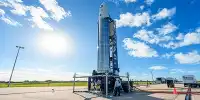Two things happened on February 27, three days after Russia invaded Ukraine. First, Russian President Vladimir Putin ordered that his country’s nuclear deterrent be placed on high alert, and second, While analysts argue the action was largely intended as a scare tactic – to “remind the world he has a deterrent” and ensure people are “talking about [that] rather than the lack of success they are having in Ukraine,” as Britain’s defense secretary put it – Putin’s commands serve as a harsh reminder of something that most of us haven’t given much consideration to since the Cold War ended.
Despite the fact that all but five countries have signed the Treaty on the Non-Proliferation of Nuclear Weapons, often known as the Non-Proliferation Treaty or NPT, the fear of nuclear war remains. While the specific locations and amounts of these weapons of mass destruction are classified, a small number of countries are known to possess them, giving them the capacity to wipe out millions of people with the touch of a button. Where, on the other hand, are the world’s nuclear weapons? And how many of them are there in total?

WHO HAS THE MOST NUCLEAR WEAPONS IN THEIR COLLECTION? Currently, the United States has 5,500 people while Russia has 6,000. The United States and Russia, unsurprisingly, hold the majority of the world’s nuclear weapons. And when we say “most,” we mean “nearly all”: there are around 12,700 nuclear weapons on the earth, with an estimated 90% – or nine out of every ten – belonging to one of these two countries.
That’s a remnant of the Cold War, which spanned from the late 1940s until the end of the 1980s and was marked by rising tensions and paranoia between the United States and the Soviet Union. During World War II, both countries attempted to construct nuclear bombs, but the United States was the first to succeed, and the bombings of Hiroshima and Nagasaki remain the only occasions nuclear weapons have been used in battle to this day.
In the decades that followed, the two countries rapidly increased their nuclear capabilities, amassing arsenals in the tens of thousands. By the mid-1980s, the world had more than 70,000 nuclear weapons; the USSR had slightly over 40,000 at the time, while US stocks had surpassed 31,000. In 2019, Richard J Burt, the main negotiator of the Strategic Arms Reduction Treaty under President George W. Bush, told the New York Times, “Even decision-makers would acknowledge the US and Soviet buildup was stupid.” “Both sides overbuilt in an attempt to avoid predictability.”
The consequence was mutually assured destruction, or MAD for short. Los Alamos scientists calculated towards the conclusion of WWII that it would take “just in the area of 10 to 100” of the sort of weapons owned by the two opponents to destroy the whole globe, despite the fact that they had 30 to 40 thousand. Each. Both had devised ways to fire these nuclear missiles even if they themselves had been attacked. In a nutshell, the policy was: don’t nuke me because I’ll nuke you.
“In a nuclear war, or even a huge conventional fight, each side should be prepared to destroy the other’s cities and society,” argued late political scientist Robert Jervis in Foreign Policy in 2009. “Of course, this goal was illogical, but MAD supporters maintained that this was the point: the conclusion would be so horrific that both sides would be prevented from initiating a nuclear war or even taking acts that may lead to one.”















